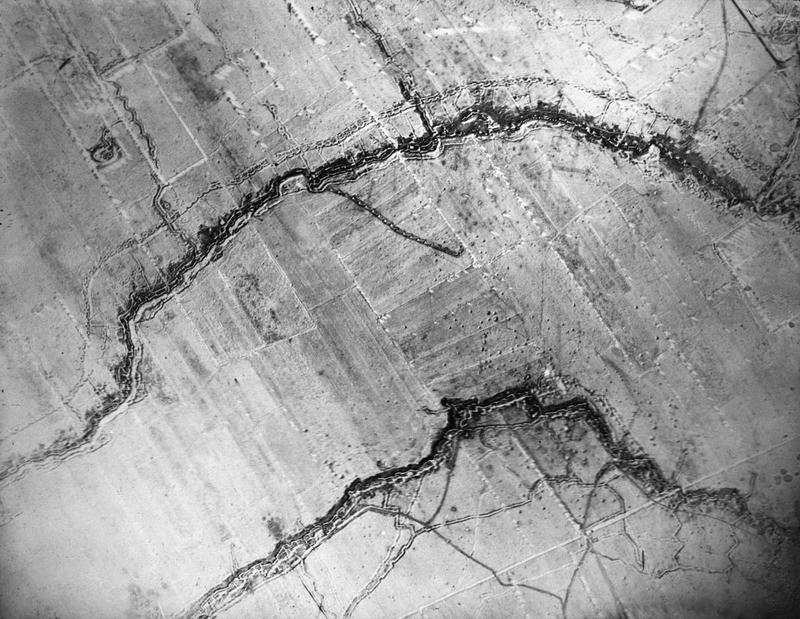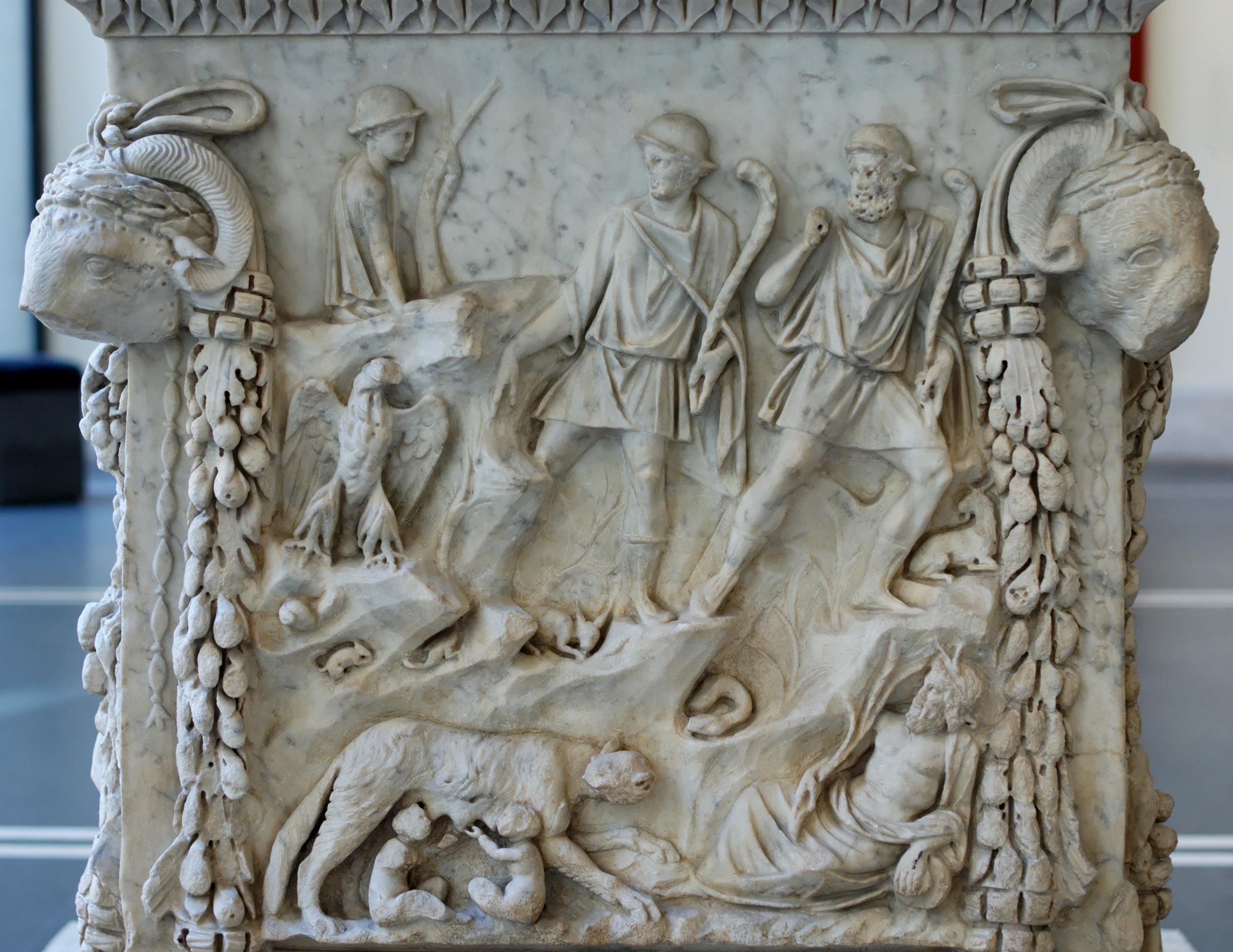|
Cluilian Trench
The Cluilian trench ( la, Fossae Cluiliae) was a huge military trench that surrounded ancient Rome about four to five miles outside the city made by the army of Alba Longa during the war between Alba Longa and Rome in the middle of the seventh century BC. It was named after the Alban king, Gaius Cluilius. Livy speaks of the "Cluilian Trenches" again in a war that took place in the fifth century BC. Here he records that a Volscian army camped at the Cluilian trench and from there ravaged the countryside.Livy, ''Ab urbe condita'', 2:39 Plutarch in his ''Lives of the noble Grecians and Romans'' also speaks of these as the "Cluilian ditches" and describes the same army of the Volsci encamped at a place five miles outside the city called the ''Cluilian ditches''. Sources *Livy, ''Ab urbe condita ''Ab urbe condita'' ( 'from the founding of the City'), or ''anno urbis conditae'' (; 'in the year since the city's founding'), abbreviated as AUC or AVC, expresses a date in years ... [...More Info...] [...Related Items...] OR: [Wikipedia] [Google] [Baidu] |
Trench Warfare
Trench warfare is a type of land warfare using occupied lines largely comprising Trench#Military engineering, military trenches, in which troops are well-protected from the enemy's small arms fire and are substantially sheltered from artillery. Trench warfare became archetypically associated with World War I (1914–1918), when the Race to the Sea rapidly expanded trench use on the Western Front (World War I), Western Front starting in September 1914.. Trench warfare proliferated when a Weapons of World War I, revolution in firepower was not matched by similar advances in mobility (military), mobility, resulting in a grueling form of warfare in which the defender held the advantage. On the Western Front in 1914–1918, both sides constructed elaborate trench, underground, and dugout systems opposing each other along a front (military), front, protected from assault by barbed wire. The area between opposing trench lines (known as "no man's land") was fully exposed to artillery ... [...More Info...] [...Related Items...] OR: [Wikipedia] [Google] [Baidu] |
Alba Longa
Alba Longa (occasionally written Albalonga in Italian sources) was an ancient Latin city in Central Italy, 12 miles (19 km) southeast of Rome, in the vicinity of Lake Albano in the Alban Hills. Founder and head of the Latin League, it was destroyed by the Roman Kingdom around the middle of the 7th century BC, and its inhabitants were forced to settle in Rome. In legend, Romulus and Remus, founders of Rome, had come from the royal dynasty of Alba Longa, which in Virgil's ''Aeneid'' had been the bloodline of Aeneas, a son of Venus.Livy, ''Ab urbe condita'', 1:28–30 According to Livy, Roman patrician families such as the Julii, Servilii, Quinctii, Geganii, Curiatii and Cloelii originated in Alba Longa. Archaeology Livy said of Alba Longa that it was founded by Ascanius to relieve crowding at Lavinium. He placed it at the foot of the Alban Mount and said that it took its name from being extended along a ridge. Dionysius of Halicarnassus repeated the story, but a ... [...More Info...] [...Related Items...] OR: [Wikipedia] [Google] [Baidu] |
Gaius Cluilius
Gaius Cluilius was the king of Alba Longa during the reign of the Roman king Tullus Hostilius in the mid seventh century BC. Alba Longa was an ancient city of Latium in central Italy southeast of Rome. He constructed the Cluilian trench, sometimes referred to as the "Cluilian ditches", which was a huge warfare trench that surrounded the ancient city of Rome approximately four to five miles outside the city walls. It was built for trench warfare and was used in various wars and battles for centuries after the original construction for this very purpose. Cluilius died just before full-blown war broke out between the two cities. The Alban general Mettius Fufetius was appointed dictator instead of elevating a new king; the subsequent destruction of Alba Longa makes Cluilius the last king of the ancient city. In popular culture Gaius Cluilius was played by Andrea Aureli in the 1961 film ''Duel of Champions''. See also *Mettius Fufetius *Kings of Alba Longa Sources * Livy, ''Ab urbe ... [...More Info...] [...Related Items...] OR: [Wikipedia] [Google] [Baidu] |
Livy
Titus Livius (; 59 BC – AD 17), known in English as Livy ( ), was a Roman historian. He wrote a monumental history of Rome and the Roman people, titled , covering the period from the earliest legends of Rome before the traditional founding in 753 BC through the reign of Augustus in Livy's own lifetime. He was on familiar terms with members of the Julio-Claudian dynasty and a friend of Augustus, whose young grandnephew, the future emperor Claudius, he exhorted to take up the writing of history. Life Livy was born in Patavium in northern Italy, now modern Padua, probably in 59 BC. At the time of his birth, his home city of Patavium was the second wealthiest on the Italian peninsula, and the largest in the province of Cisalpine Gaul (northern Italy). Cisalpine Gaul was merged in Italy proper during his lifetime and its inhabitants were given Roman citizenship by Julius Caesar. In his works, Livy often expressed his deep affection and pride for Patavium, and the city was we ... [...More Info...] [...Related Items...] OR: [Wikipedia] [Google] [Baidu] |
Ab Urbe Condita (book)
The work called ( en, From the Founding of the City), sometimes referred to as (''Books from the Founding of the City''), is a monumental history of ancient Rome, written in Latin between 27 and 9 BC by Livy, a Roman historian. The work covers the period from the legends concerning the arrival of Aeneas and the refugees from the fall of Troy, to the city's founding in 753 BC, the expulsion of the Kings in 509 BC, and down to Livy's own time, during the reign of the emperor Augustus. The last event covered by Livy is the death of Drusus in 9 BC. 35 of 142 books, about a quarter of the work, are still extant. The surviving books deal with the events down to 293 BC (books 1–10), and from 219 to 166 BC (books 21–45). Contents Corpus The ''History of Rome'' originally comprised 142 "books", thirty-five of which—Books 1–10 with the Preface and Books 21–45—still exist in reasonably complete form. Damage to a manuscript of the 5th century resulted ... [...More Info...] [...Related Items...] OR: [Wikipedia] [Google] [Baidu] |
Plutarch
Plutarch (; grc-gre, Πλούταρχος, ''Ploútarchos''; ; – after AD 119) was a Greek Middle Platonist philosopher, historian, biographer, essayist, and priest at the Temple of Apollo in Delphi. He is known primarily for his '' Parallel Lives'', a series of biographies of illustrious Greeks and Romans, and '' Moralia'', a collection of essays and speeches. Upon becoming a Roman citizen, he was possibly named Lucius Mestrius Plutarchus (). Life Early life Plutarch was born to a prominent family in the small town of Chaeronea, about east of Delphi, in the Greek region of Boeotia. His family was long established in the town; his father was named Autobulus and his grandfather was named Lamprias. His name is derived from Pluto (πλοῦτον), an epithet of Hades, and Archos (ἀρχός) meaning "Master", the whole name meaning something like "Whose master is Pluto". His brothers, Timon and Lamprias, are frequently mentioned in his essays and dialogue ... [...More Info...] [...Related Items...] OR: [Wikipedia] [Google] [Baidu] |
Ab Urbe Condita Libri (Livy)
The work called ( en, From the Founding of the City), sometimes referred to as (''Books from the Founding of the City''), is a monumental history of ancient Rome, written in Latin between 27 and 9 BC by Livy, a Roman historian. The work covers the period from the legends concerning the arrival of Aeneas and the refugees from the fall of Troy, to the city's founding in 753 BC, the expulsion of the Kings in 509 BC, and down to Livy's own time, during the reign of the emperor Augustus. The last event covered by Livy is the death of Drusus in 9 BC. 35 of 142 books, about a quarter of the work, are still extant. The surviving books deal with the events down to 293 BC (books 1–10), and from 219 to 166 BC (books 21–45). Contents Corpus The ''History of Rome'' originally comprised 142 "books", thirty-five of which—Books 1–10 with the Preface and Books 21–45—still exist in reasonably complete form. Damage to a manuscript of the 5th century result ... [...More Info...] [...Related Items...] OR: [Wikipedia] [Google] [Baidu] |
7th-century BC Establishments
The 7th century is the period from 601 ( DCI) through 700 ( DCC) in accordance with the Julian calendar in the Common Era. The spread of Islam and the Muslim conquests began with the unification of Arabia by Muhammad starting in 622. After Muhammad's death in 632, Islam expanded beyond the Arabian Peninsula under the Rashidun Caliphate (632–661) and the Umayyad Caliphate (661–750). The Muslim conquest of Persia in the 7th century led to the downfall of the Sasanian Empire. Also conquered during the 7th century were Syria, Palestine, Armenia, Egypt, and North Africa. The Byzantine Empire suffered setbacks during the rapid expansion of the Caliphate, a mass incursion of Slavs in the Balkans which reduced its territorial limits. The decisive victory at the Siege of Constantinople in the 670s led the empire to retain Asia Minor which assured the existence of the empire. In the Iberian Peninsula, the 7th century was known as the ''Siglo de Concilios'' (century of councils) refe ... [...More Info...] [...Related Items...] OR: [Wikipedia] [Google] [Baidu] |
Sieges Involving The Roman Republic
A siege is a military blockade of a city, or fortress, with the intent of conquering by attrition, or a well-prepared assault. This derives from la, sedere, lit=to sit. Siege warfare is a form of constant, low-intensity conflict characterized by one party holding a strong, static, defensive position. Consequently, an opportunity for negotiation between combatants is common, as proximity and fluctuating advantage can encourage diplomacy. The art of conducting and resisting sieges is called siege warfare, siegecraft, or poliorcetics. A siege occurs when an attacker encounters a city or fortress that cannot be easily taken by a quick assault, and which refuses to surrender. Sieges involve surrounding the target to block the provision of supplies and the reinforcement or escape of troops (a tactic known as " investment"). This is typically coupled with attempts to reduce the fortifications by means of siege engines, artillery bombardment, mining (also known as sapping), or the u ... [...More Info...] [...Related Items...] OR: [Wikipedia] [Google] [Baidu] |







